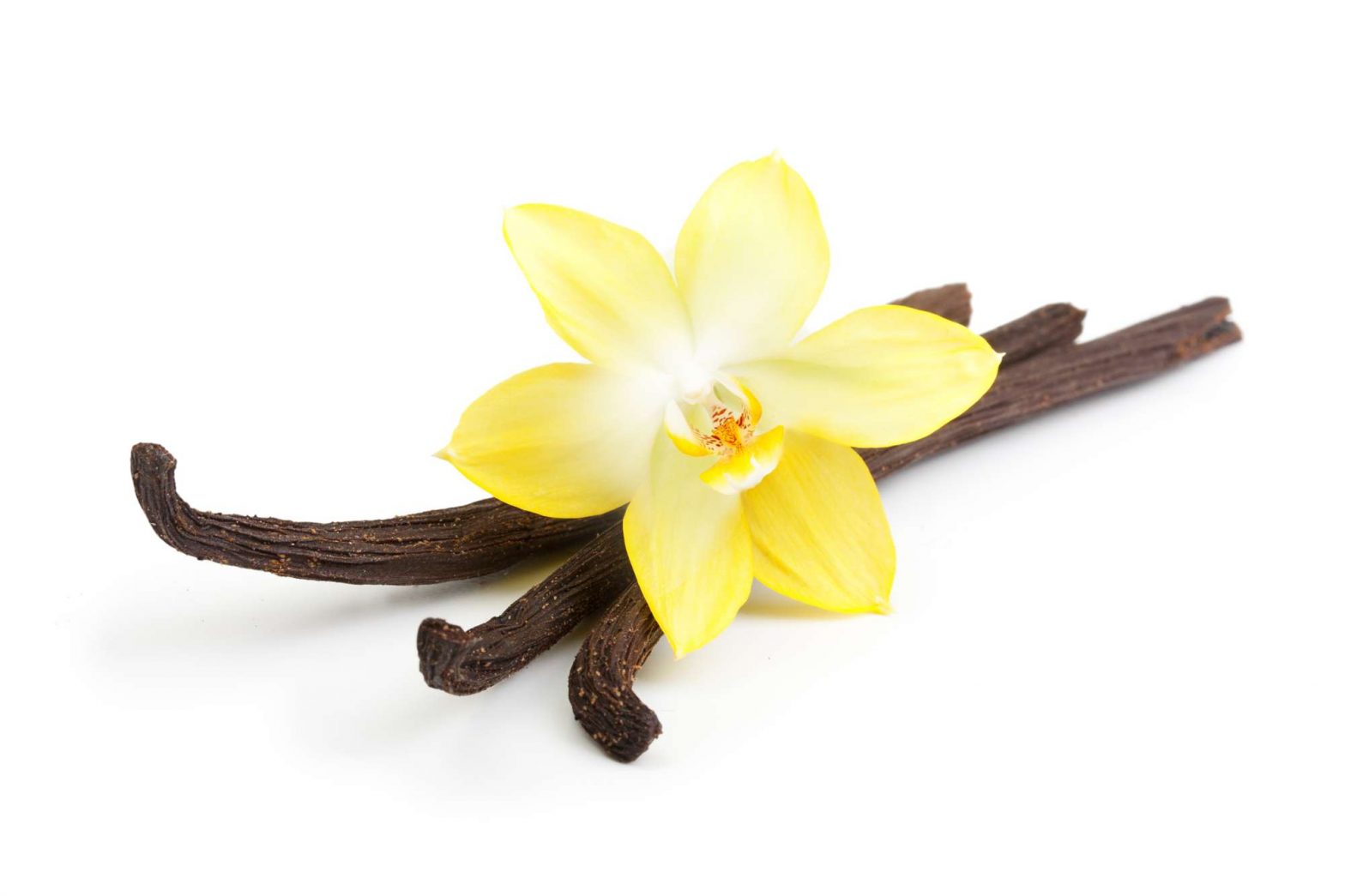Vanilla (pronounced vuh·ni·luh) is a spicy note in perfumes, and the household name for the spice derived from the orchids of the Vanilla planifolia plant, the only orchids known to man that yield edible fruit.
Vanilla smells milky-sweet, velvety-smooth, and naturally earthy. It’s welcoming, comforting, and hyggelig, like a glass of frothy lukewarm milk and cookies right out the oven on a cold and snowy winter’s day.
The vanilla plant’s name comes from vainilla, the diminutive form of the Spanish word vaina for “pod.” It translates literally into English as “little pod.”
Native to Mesoamerica—a dramatic and picturesque region of North America that spans from central Mexico to Belize, Guatemala, Honduras, Nicaragua, and southern Costa Rica—the vanilla plant has been known to and cultivated by humankind for thousands of years. And no wonder!
Try to think of one person you know who’s never had a fling of sorts with vanilla, and you’ll have a hard time coming up with a name. The pleasures of this fragrant and flavorful spice start as early as our first whiff of it yet do not end there: as any skilled lover would, it knows how to prolong them right to the edge of possibility.
When the scent receptors in our noses and the tastebuds on our tongues detect a sensation—any sensation, as a matter of fact—they’re typically in a rush to end it to prepare us for the next one.
Think of this as a protection mechanism that’s designed to hold us continuously alert and not let us get overly intoxicated by a single aroma or flavor.
Not in the case of vanilla, which contains an organic compound called vanillin. The vanillin molecules seduce our receptors to remain open for prolonged periods of time, leaving us to experience the scent and flavor of vanilla like no other.
In case you’ve ever wondered, this is why vanilla is so addictive, it’s just hard to get enough of it.
So we crave it everywhere. From vanilla-rich chocolate chip cookies and tin-roof sundae to Guerlain’s one-of-a-kind Spiritueuse Double Vanille and the sugar-sweet Love Don’t Be Shy by Kilian, vanilla’s in our hearts and minds, and we seek it 24 hours in a day, 7 days a week, 365 days a year.
As omnipresent as vanilla is, it’s grown in only 15 countries across the world. The biggest producers of vanilla present-day are Madagascar, Indonesia, China, Mexico, and Papua New Guinea.
To let go of their aromatics, vanilla beans need a solvent, typically grain alcohol. This is why, of the naturally-derived solutions, you can only find vanilla extract, infusion, and absolutes—but not essential oil.
When you factor in the high demand coming from vanilla’s popularity in drinks, foods, cosmetics, and fragrances, it becomes easy to understand why vanilla extract—the solution obtained by drowning vanilla beans in vodka—comes at such a steep price.
This is also the reason why more than one fragrance houses prefer mimicking the scent of vanilla in the form of aromatic molecules rather than sourcing it naturally. However, experienced noses will tell you that the natural scent of real vanilla is unmistakable, thanks to its distinguished earthiness.
Bourbon Vanilla
If vanilla extract is typically made by dipping vanilla beans in vodka, does that mean that “bourbon vanilla” is when they get dipped in bourbon whiskey instead?
This surprises most people, but not really.
Bourbon vanilla is the term for all vanilla grown in Réunion, a French island in the Indian Ocean formerly known as Île de Bourbon (the isle of Burbon), hence the name.
Nowadays, bourbon vanilla has even turned into a generic term for all vanilla harvested from Vanilla planifolia plantations on islands in the Indian Ocean as a whole, including Madagascar and Comoros.

